I’ve talked to a number of people recently who think that optimizing and scaling campaigns has this magical and mystical aura around it. And that there’s some secret to doing so.
Well, I’ll let you in on the secret…
During my time as the SVP, Media & Customer Acquisition at Beachbody, we ran over $500MM in media and acquired more than 10 million customers. I now work with a variety of direct response marketers — helping them to optimize and scale their businesses, identifying not only gaps and opportunities, but also key points of leverage to exploit.
And whether at Beachbody or with my clients, I’ve found that just like everything else, there is no magic.
Instead there is a process to follow, primarily driven by a list of questions, to help identify gaps and opportunities in your business. (Because oftentimes, those gaps and opportunities are where optimization and scale happens.)
Some questions have quantitative answers, others are qualitative. Some questions identify gaps in…
- information (oftentimes reports that should be run regularly)
- a marketing issue (why you don’t offer installment billing, for example)
- or a training issue (do your customer service reps know how to respond to certain customer issues)
Almost always, the first answer someone gives is not the entire story, and so pressing on additional questions can help to uncover the next layer of understanding. Those questions are harder to script because they are dependent on the specific answer and/or individual responding.
Today I’m sharing the 6 category process I use to dig in to a business, regardless of whether it’s doing $10K a month or $100MM per month. The process is the same, it’s just at a different scale and level of complexity.
But it’s not for the faint of heart.
Most likely, some of what you’ll find from this process, you can take immediate action on, like training. Other areas require testing. (Where possible, PLEASE test before you change a control.)
But before you go out and implement anything, there’s one crucial step to take…
Prioritization.
Everyone is resource-constrained — for people, time, dollars, or traffic. We would all love to test everything we think of, but of course we can’t. And not all tests are created equal. This is where doing a bit of math can help you to understand the possible impact of different tests. You’ll likely have to make some assumptions but even with reasonable guesses, you’ll realize how little (or how much) a certain test could move the needle, when compared to others.
Here’s an example:
You may believe that both your landing page and one of your later upsells could use some improvement. Based on some assumptions and running some numbers, you might find that if you could increase the front-end conversion rate from 3% to 3.1%, that change would have the same impact as tripling your conversion rate on the upsells from 1% to 3%.
But with some business context, you might also know that the upsell is a hard sell at this point – maybe it’s really expensive or maybe the offer just isn’t compelling as it needs to be. Not to mention, a later upsell requires more traffic to get the test to statistical significance. As such, that little bit of math you do might help you move forward with the front-end test instead of some lengthy upsell one.
Too many people miss this prioritization step and as a result, don’t focus on the key points of leverage in their business.
So… ready for the 6 category process? We’re about to get into it. But first a word to the wise…
The below is fairly in-depth and so it might serve to identify where you ASPIRE to be. You may not have these things in place now or in a year. Don’t be intimidated. If you’re at the beginning of your journey, pick one or two of these gaps and close them. When your business is young, even the smallest changes can have a tremendous impact.
If you have a mature business but are looking to take it to the next level, you’ll want to address more of these gaps or hire someone to get it done.
Ready? Let’s go.
6 Revenue-Focused Categories
The list below is by no means perfect, nor comprehensive across all businesses.
But it does reflect the primary steps in my process of helping to break down a business to find areas to maximize.
The core questions fall into 6 categories that are primarily revenue-focused. They may also help to define roles and teams as the organization grows. I’m a huge believer in managing expenses, but if you’re a younger, growing company and you don’t have sales, the rest doesn’t matter:
- Traffic / Media
- Conversion
- Offers
- Non-converting leads
- Post-Transaction
- Retention
Let’s start with…
1. Traffic / Media
Start with your traffic sources.
Do you have a weekly report showing…
- traffic
- spend
- conversions
- CPA
- conversion rate
- AOV (Average Order Value)
…by traffic source (SEO, Facebook, Email, etc.)? Can you analyze trends weekly? If not, you’ll likely find that simply reporting on this type of information will provide a foundation upon which to build.
Then you can starting digging in with a number of questions:
- Do you know customer LTV by channel?Because performance relative to goal is the only way you can say that one channel is doing better than another. (I’m assuming you’re a direct-response marketer and not simply focused on impressions and reach.)
- If the LTV is different, are you actually managing to different CPA goals?
- Are those different goals on your reporting spreadsheet and are you managing to those different goals?
- What channels are performing better than others?
- What sub-channels, ad groups, etc. have shown success and which have struggled?This sounds like the same question, but the former is at the channel level. This is about looking at results where everything happens — in the details.
- And then, there’s the simple question of when was the last time you tested new copy or images?
Not all questions will come from a report. For example:
- How repeatable and scalable is an opportunity or channel you’re considering? You might get pitched what you think is a great idea, but if it’s only a 1-off and you can’t replicate it and scale it, you might want to consider passing. For example, someone with a list offers you a JV deal, but you need to do a ton of customization on your site and to your backend to run it. And that customization isn’t applicable to other JV partners. That takes work and is a potential distraction to your team who might be able to focus on other opportunities that are repeatable and scalable. This is not to say you never do 1-off’s, but rather that you look at these types of opportunities with a discerning and intentional eye.
In general, in my experience, the companies that have had the greatest success know that repeatability and scalability are two keys to their success. And those companies know…
The one big mistake to avoid.
And this applies beyond media. Once you find success with a channel (or offer), go deep and hard on it. It’s really easy to get so caught up in testing different sources that you fail to fully exploit one (or two) that is working. Or like a lot of marketers, you might have shiny object syndrome or get captivated by something you hear from a friend.
If you look at the successful marketers out there, they aren’t actually masters of every channel. They are usually really good at one or two. When you think about it, that’s not surprising. They probably tested a few things, found some success and then pushed hard there. Because they knew that they couldn’t be great at everything but also that they needed to go deep where they were having success.
Sometimes that’s the difference between those who scale and those who don’t. Two companies might both achieve early success but it’s what they do with that success that can separate them.
Key Takeaways
- Work to understand the value of customers from different channels and that you’re managing to those respective goals.
- Filter on repeatable and scalable opportunities.
- Once you find success, exploit the heck out of it.
Next up…
2. Conversion
Most people have the raw basics down:
- Click through rate
- Overall conversion rate
- Average order value
Then you can starting digging 1, 2, or even 3 levels deeper with a number of questions:
- Do you know conversion rate by traffic channel?
- If you have a 2-step conversion path (landing page -> checkout page->thank you page), do you know the click through rate from landing page to checkout page and from checkout page to thank you page? It might reveal something to you, such as break points in your funnel. Translate this to other parts of your funnel and your business.
- Can you betterunderstand the different steps in your business? For example, do you track how many people submit an email address or a credit card on your form but don’t complete an order? This might tell you something about your form, page, offer, or something else.
- What is the take rate for each upsell in your funnel? Do you know it overall and by channel?
- When you calculate AOV, are you including continuities initiated from that first transaction when you consider Lifetime Value? Meaning, when you analyze initial orders, are you appropriately valuing them(while understanding there are cash flow implications to consider)?
I know… I just hit you with a ton of questions. Take a deep breath.
Then, just pick one of them and focus. Or, hand that list to whoever handles conversions and allow them to pick. I’m intentionally throwing a bunch out there to give you different ways of looking at your conversion path.
Then, there’s the most underused and valuable conversion tool that digital marketers fail to add to their mix:
…a phone number.
But isn’t the phone old-school technology? Yes, it is. But you also might not realize that many marketers make 25% or more on a phone order than an order online (even factoring in the cost of talk time and agent costs), not to mention conversion rates can be dramatically higher on the phone.
So if a customer has a question or wants to order on the phone, do you let them? Particularly if you have customers 45+ years old or have a higher ticket offer?
Even if the idea of managing a call center scares you, you can do a simple 3-step test:
- Get a new prepaid mobile phone number for your business
- Put that phone number on the landing page AND checkout page
- You or one of your team can answer calls – even if you only want to answer calls 5 hours a day, put a voicemail message for when you don’t answer.
You will quickly figure out if people want to call, then you can see for yourself if the added work of more numbers, agents, or even a sales call center (VERY different than your customer care agents) is worth it.
Key Takeaways
Whether you’re sending your traffic to a…
- landing page
- phone number
- webinar
- Amazon
- physical store
…try to break down and track the process each step of the way.
At the least, you’ll have a baseline to measure from.
Better yet, once you break things down at a more granular level, you’ll uncover opportunities you hadn’t seen before.
3. Offers
There is plenty of info out there Tripwires, writing copy, etc., so I’ll focus on a couple other areas that can have a significant impact on your business.
Upsells
Anything less than 2 and you’re probably leaving money on the table.
Giving customers the ability to order more than 1 of whatever you offer — 2 or 5 or 10 of something — is an upsell. They don’t have to be some magical new product. While ingestibles have had real success offering multiple units, if you offer a training program, why not suggest that a customer buys a second for a friend, or gets a second for a discount?
Offer Bumps
Russell Brunson has a really slick version in Step 2 of his process here.
Don’t have another product to sell? Be an affiliate to a relevant and complementary product…
- If you are in weight loss, go partner with a company like HealthyOut or a food delivery company
- If you’re in the dating niche, find someone who can help your clients with personal style and attire
- If you teach internet marketing skills, find a technology partner (look at what Digital Marketer has done with InfusionSoft)
Then, when you test, you can see what your traffic responds to, and that might give you some insight into what product your audience will respond to.
Installment Billing and Payment Plans
Some marketers offer a premium for installment billing — the multi-pay total is actually more than the 1-pay.
(By the way, this is also called financing and what each of us did when we bought a car or a house.)
Some marketers (see: infomercials) start with a multi-pay offer and then offer an incentive for 1-pay (managing to bad debt and getting cash on day 1 can be hugely valuable).
Neither is right or wrong. Or inherently good or bad. But are you doing either?
Price Testing
When was the last time you tested increasing or decreasing your price point?
You can test by traffic or adding/removing something simple in the offer in case you’re worried about customer backlash — test to a small percentage of your traffic, but you need to get at least 500-1000 orders to feel good about the results.
Key Takeaways
What can you do to generate more?
When all else fails, go check out what your competitors are doing!
4. Non-converting Leads
The average conversion rate to most sites is ~5%. That means 95% of visitors aren’t converting.
Which means it’s absolutely necessary to be using retargeting. Are you?
On Facebook?
Here’s what a retargeting ad looks like on Facebook…
Display?
Via email for cart abandoners?
Test when and how many to send – perhaps start with 3 emails – 20 mins post-exit, 23 hours later, and then 1 week later.
You can dig in to your retargeting efforts with these questions…
- When was the last time you tested your creative on retargeting?
- What can you apply from your retargeting campaigns to cold traffic.For example, lookalike audiences on Facebook or Google?
- If you have a higher price point product (over $500 for example),have you tested calling non-converting leads? (There are some specific legal rules on calling people, so take a look at the rules before doing so.)
- When was the last time you had someone go through your site to make sure that pixels are actually in all the places you thought they were? Or whether your remarketing automation is actually working as you believe it to be?
Key Takeaways
Don’t let anyone go.
Even junk traffic can be monetized — I know a guy making a killing by taking people who mis-dial toll-free numbers and offering them a survey which has been funded by a research company. Don’t harass people, but even people who inadvertently raised their hand can be valuable.
Regardless, definitely make sure you have a path for people who don’t convert.
5. Post-Transaction
Again, there is a lot out there about offering more on the thank you page.
So let’s target other areas of your business
Do you send an order confirmation email?
Do you offer content or additional offers in that confirmation email?
What about a shipping confirmation email?
Do you provide onboarding content?
Here are some great examples for SaaS businesses, but applicable to any business.
This one frankly could come pre-transaction but do you make it super easy to get going with something as obvious as a “Start Here” button
Do you tell your customers what to expect when using your product?
- If you offer a cleanse, do you tell customers to be prepared to be cranky on day 3 or 4, so that they might want to start on a Thursday so their work doesn’t suffer?
- If you sell them an ingestible, like a shake, do you provide recipes and/or make suggestions on how to make it a part of their daily routine?
- Do customers know to expect that muscle soreness doesn’t usually kick on the next day but 2 days after (because of DOMSS – Delayed Onset of Muscular Stiffness and Soreness)
- On day 30, if they purchased an ingestible like protein powder, do you send them an email with a quick reorder link?
Is it easy for people to find answers to questions or know where to go or do you try to make it nearly impossible for customers to contact you?
And in that case — are questions responded to in a timely manner?
Key Takeaways
Most of these suggestions don’t immediately impact your bottom line. But if you can take steps to make sure that people’s experience of your product or service is great, and that they feel like you are looking out for them, they will like you that much better.
And their chances of success with your product will be higher.
Which means repeat and referral business. (This is the cheapest source of traffic you can get.)
6. Retention
Note: This section is applicable both to continuity offers (e.g. membership sites, subscriptions, etc) and “1-time” transactions
Let’s start with a few questions here:
- Especially if you have a continuity or subscription-based business, do you have a single person accountable for retention?If the answer is everybody or nobody, that may be the first place to start.
Well beyond retention, having a single person accountable for a component of the business increases the chances of it improving, or the rate by which it improves. And simply because there’s a single person accountable doesn’t of course mean that individual is the only one working on it. It merely means that they are the owner who then coordinates with other folks on the team.
That individual could then focus on understanding and improving questions like the following:
- How long do customers stay on continuity? By channel or offer?
- Are you breaking down customers into cohorts based on start month to see if there are any changes over time?
- Do you know your refund rate? Remember that refunds are a part of customer retention, even if you don’t have a continuity product.
- What are the top 3 reasons people cancel or return your product/service?
- What do your customer service reps say when a customer wants a refund? Based on any kind of segmentation?
The above gets you to a baseline level of understanding. Again, don’t get too caught up if you don’t have this historically – at the least, beginning the process of tracking sets you up going forward. The next step is to see what you are actively doing to extend the lifetime of a customer.
- Can the messaging on the front-end be tweaked, without killing conversion?
- What content should be communicated to the customer after they have purchased? (Overlaps with the post-transaction section above.)
- Can you partner with someone to offer a product or service that addresses the bigger challenges people face?
One of my friends has a product to help people build their own business, but he knows that one of the biggest challenges his customers face is psychological, not technical. So he has partnered with a personal development coach offering his services to his customers as an upsell. He can also test offering these services, potentially for free, given how high his price point is, to customers wanting a refund.
“Before you cancel, can I connect you with a personal development coach who will spend 45 minutes with you to help get you over the barriers that have been holding you back?”
That’s a pretty compelling message.
- Can you keep people on a downgraded plan when they want to cancel?
When I tried to cancel my ClickFunnels account, which was $97 / month, I got an offer for $19 /month (I think) to keep pages but they aren’t live. But if I cancelled, my pages were deleted forever. So I’m paying to pause my account.
That’s pretty slick!
Here’s a question I’m sure more than a few of you are asking right about now:
What if you don’t have a subscription model?
(Other than the snarky, “well you should get into one…”)
Retention doesn’t have to be about continuity billings but can be about making sure someone is active and/or happy enough to buy when you put out new offers.
Ultimately, what can you do to create happy and successful customers? It sounds so obvious, and yet too often we fail to dig in to understand our customers’ key pain points – just spend a couple hours taking customer care calls and you’ll hear it first-hand. Then figure out how to take that knowledge to tweak your customer’s experience.
Key Takeaways
No matter what, your business shouldn’t be just about traffic and acquisition.
As everyone knows, it’s a lot easier to sell to an existing customer than to a new one. So what can you do to nurture your existing ones?
So here we are…
This process really is about identifying and digging in to the key components of your business. Whether you’re a 1-person shop or have teams all over the place, the actual process of going through and answering these questions – at least for the first time – will likely identify gaps as well as needs (oftentimes information needs).
But the process doesn’t stop after that first time. It should build to be a continual process that eventually gets parsed out to team members who have accountability for improving their respective areas.
Final note: everyone is resource-constrained, so you’ll want to find the biggest points of leverage in your business. But don’t shy away from small wins. Remember, a lotta littles can add up. When you and your team start paying attention to the more granular details in your business, that is when you will create true optimization and scale.
So at the very least, pick a single area to focus on. Make it something achievable. And go make it happen!
I’d love to hear your thoughts on where you have challenges driving growth and where you’ve had particular success.
(This post originally appeared on the DigitalMarketer blog.)


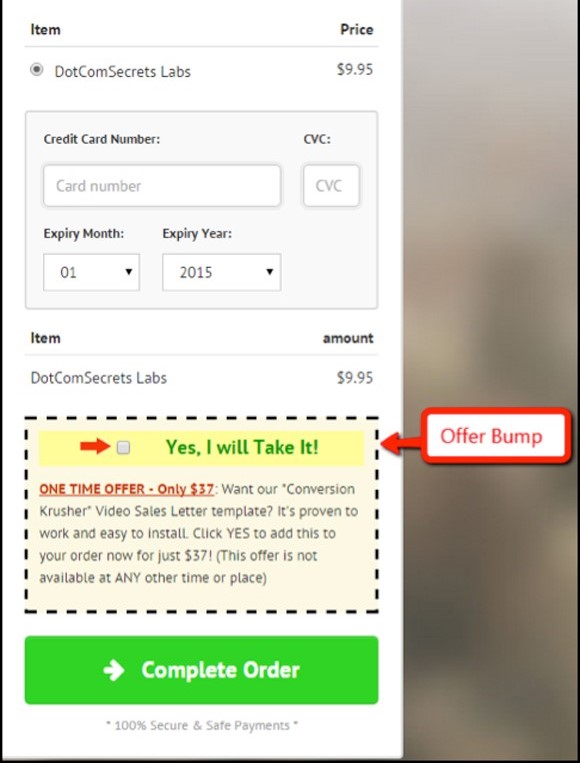

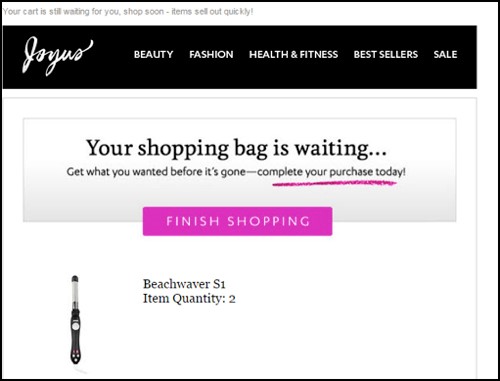
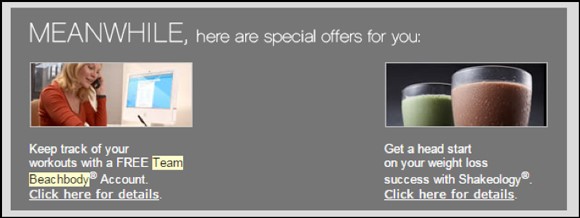


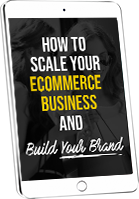
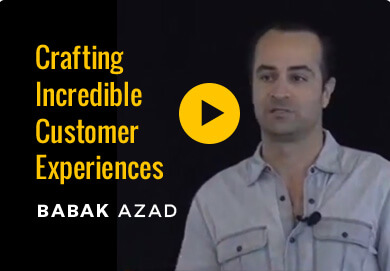



Hey Babak
I think I may have read this on the DM site when it was 1st published, but I had to come back and read it again here-its just SO valuable
The information on nurture, success and retention is so important-even if your doing “launches” getting people to not only stick through the content and keep paying if on a payment scheme, BUT actually helping them get success is huge
I’ve saved this for future use and even printed off a copy for the notice board at our shared colab space
Will go and check out your other content now!
Daniel
P.S
Oh and as a self confessed retargeting nerd, thanks for promoting how important it is
One thing you might want to try also is adding in potential objection criteria, and rotating through them with your retargeting campaigns on the back end
Retargeting is already cheap, and for the cost of a just a few more campaigns to that audience, you can see much higher sales by attempting different reframes
Price is never usually the issue, but its normally a trust, proof, fear or self objection/skepticism issue that can be dealt with quite easily
Not for everyone, but it can guarantee you more sales!
Daniel
Great ideas Daniel. And thanks for the note. Glad to hear this was helpful.
I really like the ideas re retargeting in terms of rotating thru different messaging. Especially online it’s not nearly as invasive than in person. Sometimes it just takes a different frame to capture people’s attention.
Thx once again.
Babak
No problem at all Babak
Thanks for putting the post together!
I’ve found that when rotating through different reframes, the ones that don’t apply are either ignored or help reinforce the frame that does work…
Also you have the added bonus of helping stay top of mind, but of course its hard to measure the value
I need to test with different options but I’ve found its hard to get a 1 size fits all (ie what can you skip out of the reframes) but with the current cost to be back infront of them again, the higher sales from previous audience is more than worth it!
Daniel
Wow, best post I’ve read on digital marketing in a long time.
Where’s all the comments?
Came here off of your FB Ad, good shit.
Thanks Andrew. I appreciate the note.
-Babak
Excellente!!!
U avail for consulting?
Hi Marina,
Thanks for the note.
Yes, I work with a handful of clients. I’ll shoot you a note separately and we can discuss.
-Babak